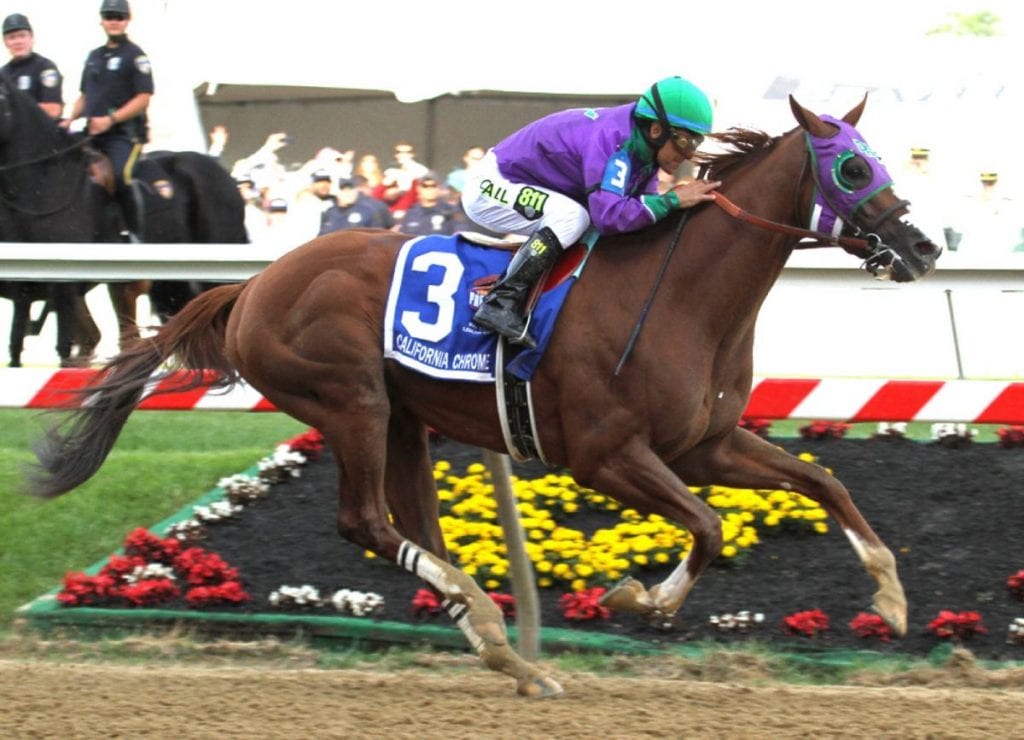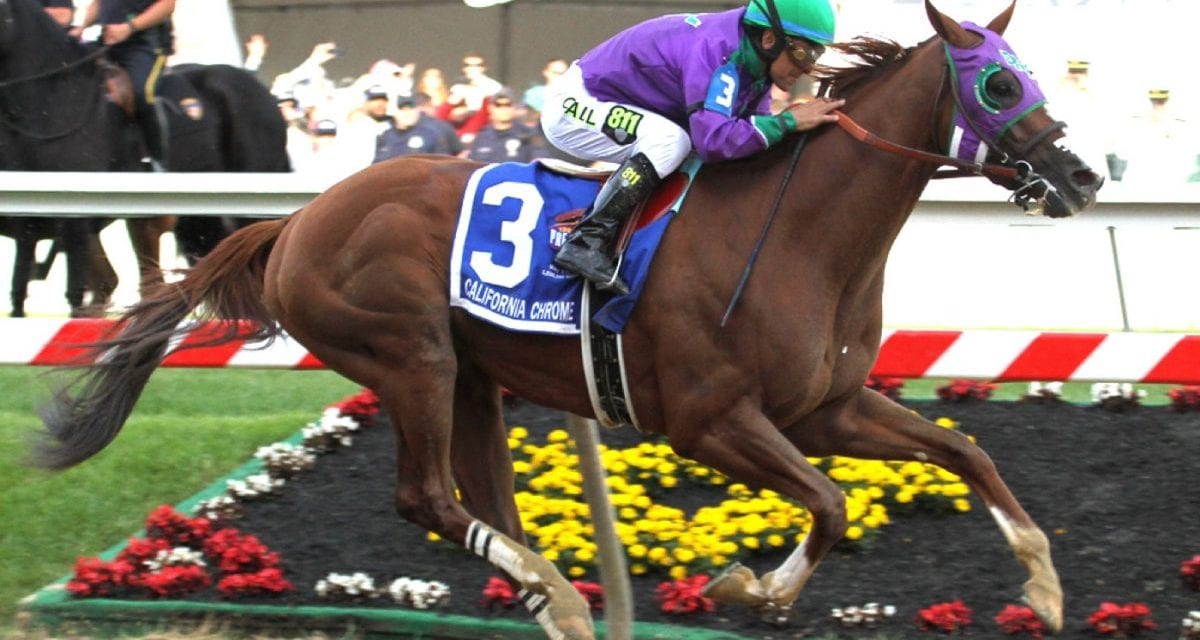
California Chrome would not have been allowed to run in the Preakness if NYRA’s new 14-day rule had been in place in Maryland. Photo by Laurie Asseo.
by Frank Vespe
Fourteen horses have died in 26 days of live racing at Aqueduct, an astonishingly high rate that has given New York’s, and the nation’s, racing communities pause.
It’s the second time in three years that a spate of fatalities on Aqueduct’s inner dirt track has grabbed headlines. And, oddly enough, for the second time in three years, everyone is scrambling to absolve the most obvious likely culprit — the racing strip itself and how it handles the freeze-thaw cycle.
Instead, the New York Racing Association (NYRA) has implemented a series of short-term bandages that may — or, given that the latest fatality occurred after the new regs, may not — provide some temporary solace without addressing the root cause, whatever it may be.
Those include reducing from nine to eight the number of races on weekday cards, creating a poor performance list off which horses have to work their way, raising the bottom maiden claiming level to $16,000, and prohibiting horses from running back within 14 days of their last start.
It’s that last that, shall we say, causes a double-take.
Or at least it did so for trainer Gary Contessa, who wondered, in the Blood-Horse, “So if the Preakness was run in New York, no horse that started in the Kentucky Derby would be allowed to run?”
Contessa is hardly alone; a number of other trainers have spoken out critically about that specific change.
And, of course, Contessa is right: if Maryland were to implement such a policy, it would bar Derby runners from running in the Preakness. That’s one sure way to ensure no further Triple Crown winners.
Ironically, when, back in May, then-Maryland Jockey Club president Tom Chuckas floated the idea of reconfiguring the Triple Crown to provide more time between races — which would obviously have helped Pimlico’s undercard races but would also have been responsive to changes in horse training and racing — NYRA officials were decidedly cool to the idea, which, sources have said, helped to kill it.
In a July interview, NYRA Senior Vice President of Racing Operations Martin Panza told ESPN that “there’s a lot of tradition in the Triple Crown and I’m not sure [if a change] is the right thing to do… I’m not going to get on the phone tomorrow and call Pimlico because we had a record day. It’s pretty hard for me to say there’s a problem with this. I don’t see it as one.”
That was then, and this, of course, is now. And the Preakness undercard is Pimlico’s problem, and not NYRA’s.
In the end, though, you at least have to ask the question: is a two-week rule a good rule, and if so, shouldn’t the Triple Crown be reconfigured? Or is it merely window dressing, in which case, what’s the point?








Window dressing. They don’t want to address the real problems.
Preakness isn’t run on Aqueduct inner by cheap claimers
No, it’s not – but the official position of NYRA seems to be that it’s not the AQU inner that’s at fault (at least, that’s what everyone’s saying). Moreover, the rule doesn’t apply only to cheap claimers – it applies to all horses, whether million dollar stakes animals or bottom maidens. And, of course, if running back in two weeks is bad for cheap horses, chances are it’s bad for expensive ones, too.